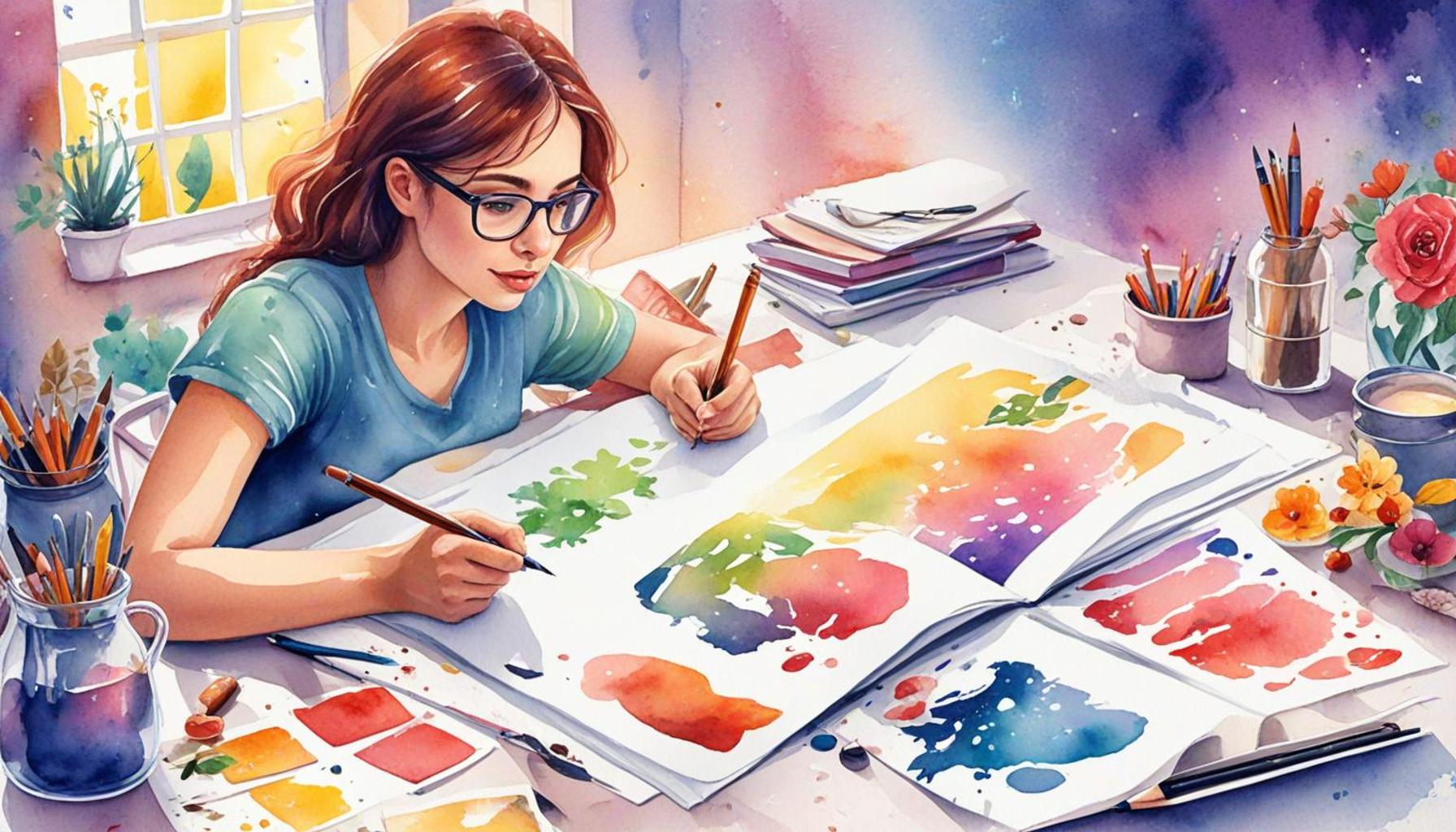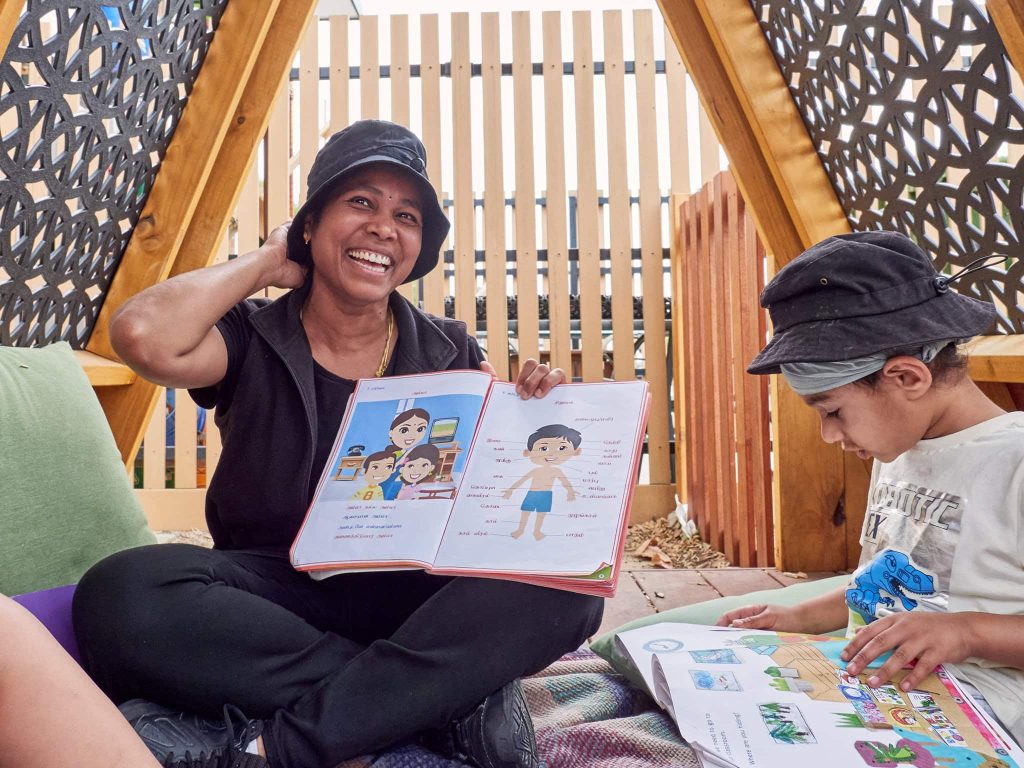Collaborative Writing: Creating Stories Together and Strengthening Creative Bonds

The Power of Collaborative Writing
In a landscape where storytelling holds significant influence, collaborative writing stands out as a transformative practice that empowers writers to create rich and engaging narratives. By pooling together their talents, authors can develop stories that not only captivate readers but also resonate on a deeper emotional level. This cooperative approach to writing elevates the creative process and fosters enduring relationships among participants.
What is it about collaborative writing that makes it so compelling? Let’s explore its key benefits:
- Diverse Perspectives: Every writer contributes their unique background, culture, and experiences to the story, which adds depth and nuance. For instance, a group of writers from different regions of the U.S. might collaborate on a narrative that weaves together varying regional dialects, customs, and historical contexts, making the story more relatable to a broad audience.
- Enhanced Creativity: The brainstorming sessions that often accompany collaborative writing can lead to innovative concepts and unconventional storytelling techniques. For example, writers might experiment with narrative structures or character development that they wouldn’t have considered independently.
- Accountability: One of the hidden benefits of working with others is the motivation to meet deadlines and uphold a high standard of quality. When deadlines are set collectively, participants often push each other to achieve their best work, ensuring that the final product is polished and professional.
From educational settings where teachers encourage teamwork through group writing assignments to local writers’ studios where individuals come together to critiqued each other’s work, collaborative writing serves as an essential catalyst for fostering creativity. It empowers individuals to step outside their comfort zones, experiment with different genres, and try their hand at styles they may not typically write in. This exposure can lead to significant growth as writers challenge themselves to expand their horizons.
As you venture into the realm of creating stories together, consider how collaboration might reimagine your creative journey. The connections forged through this process can lead to extraordinary narrative experiences, allowing you to discover not just the voices of others, but also your own as you explore new creative territories.
In conclusion, collaborative writing is more than just an artistic endeavor; it is a powerful tool that enriches the storytelling landscape. By embracing the myriad benefits it offers, writers can foster stronger creative bonds and produce innovative, thought-provoking narratives that engage and inspire audiences everywhere.

DIVE DEEPER: Click here to unleash your creativity with recycled materials!
Expanding Horizons Through Collaboration
The essence of collaborative writing lies in the collective creativity it uncovers. When writers come together, they don’t just share their work; they engage in a rich exchange of ideas, turning individual strands of thought into a tapestry of interconnected narratives. This dynamic process encourages writers to *step outside* their conventional boundaries and embrace fresh approaches to storytelling. The collaboration often leads to unexpected plot twists, innovative character arcs, and vibrant dialogue that might not have emerged in solitary writing.
Moreover, the interaction among writers can spark a sense of community and belonging. Whether you’re crafting stories with colleagues in a corporate setting or brainstorming with fellow enthusiasts at a writing retreat, the connections formed can transcend the workspace. Many writers find that their collaborative projects foster friendships that endure beyond the writing process, creating support networks that inspire and motivate their creative pursuits long after the final draft is complete.
Benefits of Collaborative Storytelling
The benefits of collaborative storytelling are multifaceted and extend far beyond the creation of a single narrative. Consider the following advantages that highlight the transformative power of these collective creative endeavors:
- Skill Sharing: Each participant brings unique skills to the table—some may excel at plot development, while others might shine in character dialogue or thematic depth. This amalgamation of strengths offers everyone the opportunity to learn and grow.
- Reduced Creative Anxiety: Many writers experience self-doubt and the pressure of isolation when working alone. Sharing the writing journey can alleviate some of this pressure, as participants encourage one another and celebrate collective achievements.
- Wide-ranging Feedback: Collaborative writing fosters an environment of constructive criticism. Participating writers provide diverse feedback that can illuminate blind spots or inspire innovative revisions, leading to a more well-rounded and polished piece.
Furthermore, the joys of creating stories together transcend just the writing. These collaborative efforts often culminate in new forms of storytelling, such as scriptwriting, podcasts, or even interactive media, allowing writers to explore the intersection of technology and narrative. Writers in the U.S. are increasingly participating in online platforms and workshops where they can collaborate virtually, thus broadening their reach and impact.
As you delve into the world of collaborative writing, consider how these interactions may unlock new pathways for your creativity. The process not only enriches one’s storytelling abilities but also strengthens bonds between writers, paving the way for future projects and collaborations. By weaving together the threads of each participant’s experience and imagination, the resulting stories often surpass what any single writer could accomplish, creating deeply resonant narratives that captivate audiences and foster connections.
| Advantages | Details |
|---|---|
| Enhanced Creativity | Collaborative writing fosters a dynamic exchange of ideas, allowing writers to combine their unique perspectives and inspire out-of-the-box thinking. |
| Strengthened Relationships | Working together on narratives encourages mutual respect and understanding, creating emotional bonds that can strengthen collaborative efforts in other areas. |
Collaborative writing not only serves as a platform for creativity but also plays a crucial role in building and nurturing relationships among participants. As contributors bring their distinct voices into the narrative, they learn to appreciate each other’s strengths while navigating the challenges of co-creation. This process can lead to a profound sense of accomplishment when a cohesive story emerges from diverse contributions.Further, tackling a writing project together can lead to *constructive feedback*, essential in honing one’s craft. Writers often find that input from peers can reveal blind spots, offering newfound insights that help refine their storytelling techniques. By embracing vulnerability and sharing their work, contributors become part of a supportive community, enhancing their writing and personal development.The journey of constructing a story as a team is an enriching experience, allowing for the exchange of ideas, enhancing creativity, and ultimately strengthening creative bonds. These collaborative endeavors are not only fun but also significant for fostering long-term partnerships and friendships in the literary world.
DIVE DEEPER: Click here to discover the power of music in self-expression
Fostering Innovation and Creative Growth
In the realm of collaborative writing, innovation is not just a possibility; it is a byproduct of synergy. When diverse minds converge, they cultivate a fertile ground for experimentation and creativity. Each writer enters the collaboration with a distinct perspective shaped by personal experiences, culture, and preference. This diversity can lead to originality that fuels breakthroughs in narrative structure, pacing, and even genre. For instance, a science fiction writer collaborating with a historical fiction enthusiast can forge a novel that blends futuristic scenarios with richly detailed past eras, producing a fascinating juxtaposition that both genres alone might not achieve.
The landscape of collaborative storytelling has evolved significantly in recent years, particularly with digital platforms finding their footing in the creative sphere. Writers from around the country—be it seasoned professionals in Los Angeles or budding talents in New York—can engage in real-time brainstorming sessions through websites and social media groups focused on collaborative writing. These platforms not only facilitate easy communication but also allow for more dynamic engagement methods, such as multimedia elements, which can bring narratives to life in ways a traditional manuscript may not. For example, platforms like Wattpad and Google Docs enable writers to comment and edit story drafts simultaneously, providing instant feedback and fostering a vibrant collaborative environment.
Creative Workshops and Retreats
One highly effective method for harnessing the power of collaborative writing is through creative workshops and retreats. These gatherings, often hosted in inspiring locations, encourage writers to immerse themselves in collaboration away from everyday distractions. According to a study by the American Association of University Professors, participation in such events can significantly enhance writer productivity, creative output, and lead to the establishment of lasting creative partnerships. Here, participants engage in writing exercises, critiques, and group discussions that stimulate not only critical thinking but also camaraderie among peers.
Sustained collaboration can also lead to the exploration of complex themes that may resonate strongly with readers. For instance, a common focus on social issues can inspire several writers to tackle a topic through various lenses; individual narratives can converge into a collective commentary that elevates the thematic depth of the final work. Stories borne from such collectives often carry profound social relevance and can even drive community conversations, as seen in initiatives like NaNoWriMo (National Novel Writing Month), where writers join forces to tackle shared goals.
Many might envision collaborative writing as a straightforward task of co-authorship, but it often evolves into a journey of personal and interpersonal discovery. The process of creating together can unearth latent talents and refine existing skills, encouraging writers to confront their limitations and turn them into strengths. In doing so, they create not just stories, but a shared sense of purpose and connection that is invaluable in the often-isolating world of writing.
This exploration into creating stories together can pave the way for continuous growth and development among writers, leading them to inspire one another in their craft while simultaneously expanding their capacities to tell compelling stories. Embracing the collaborative process transforms writing from a solitary act into a multifaceted experience that deepens creative bonds and enriches the literary landscape.
DISCOVER MORE: Click here to unlock the secrets of storytelling
Conclusion: The Power of Togetherness in Writing
In conclusion, collaborative writing stands as a dynamic testament to the strength of human connections through storytelling. By embracing the diverse perspectives and talents that emerge from teamwork, writers not only create richer narratives but also cultivate profound creative bonds. The act of crafting stories together fosters an environment of mutual encouragement, innovation, and growth. As writers share their unique voices and skills, they can dismantle the isolation often associated with the writing process, leading to new friendships and partnerships that last far beyond the pages of a manuscript.
Moreover, with the growing accessibility of digital platforms and collaborative workshops, more writers than ever can engage in this rewarding practice. Such opportunities allow for the exploration of multifaceted themes, making narratives more relatable and socially relevant. From community initiatives like NaNoWriMo to creative retreats, the avenues for collaboration continue to expand, paving the way for countless stories yet to be told.
As we look towards the future, it is vital for writers—from aspiring authors to seasoned professionals—to embrace the spirit of collaboration wholeheartedly. By doing so, they may unlock their full potential and discover that the journey of storytelling is as gratifying as the final product. Ultimately, creating stories together not only enriches the literary landscape but also strengthens the creative fabric of our communities, proving that the power of togetherness can lead to extraordinary artistry.
Related posts:
The Importance of Revision: How to Refine Your Text for Successful Publication
Writing for the Future: How Science Fiction Literature Can Inspire Innovations
Healing Through Words Uncover Poetry as Therapy for Wellness
The Relationship Between Literature and Music: How Song Lyrics Tell Stories
The Art of Microfiction: Telling Stories in Few Words
Writing for Well-Being: How the Practice of Creative Writing Can Reduce Stress and Increase Self-Con...

Linda Carter is a writer and creative hobbies expert specializing in crafting, DIY projects, and artistic exploration. With extensive experience helping individuals discover their creative potential and bring their ideas to life, Linda shares her knowledge on our platform. Her goal is to empower readers with practical tips, inspiring ideas, and step-by-step strategies for success in the world of creative hobbies.